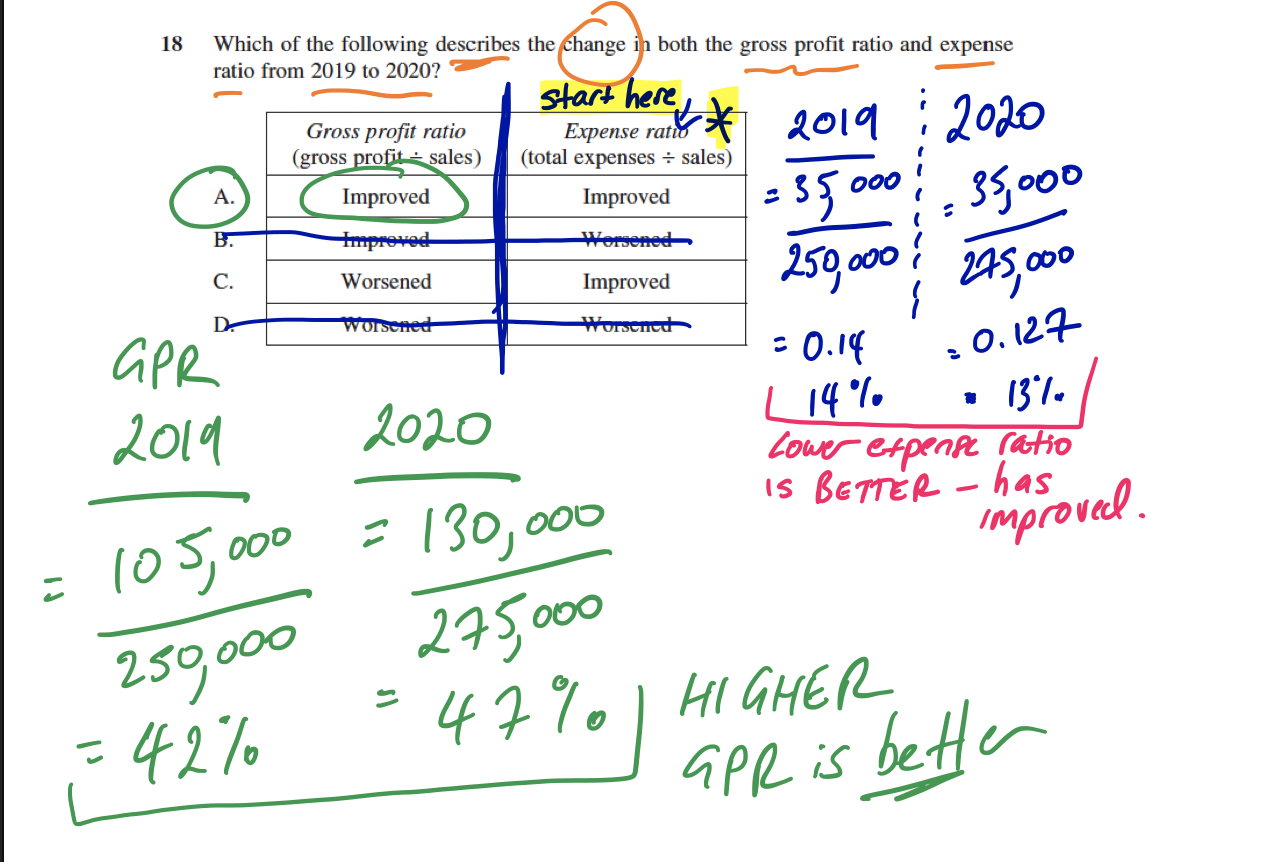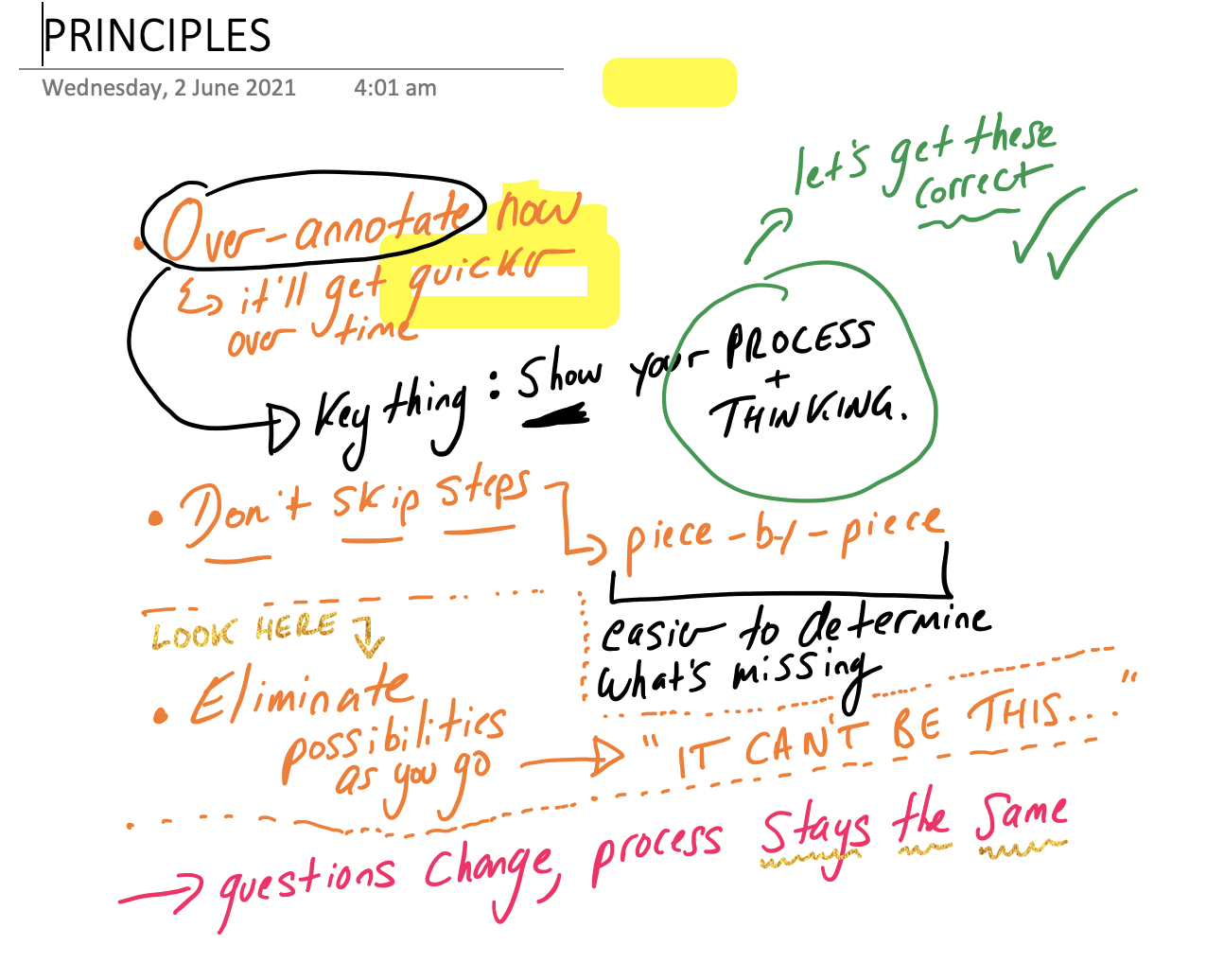Annotate like crazy.
I don’t tell students to annotate their exam questions. I show them how to annotate their exam questions.
While we’re in class, before we hit the stress of the exam halls, I want students to put a lot of effort into their annotations. They’ll get quicker over time. They’ll need less annotating as their skills improve and the range of questions become more familiar.
But, at the start, they’ve got to annotate like crazy.
Let me show you what I mean.
Here is the original question taken from the 2020 NSW Business Studies Higher School Certificate (HSC) exam. It’s a pretty typical Business Studies financial ratios question. Lots of opportunities for confusion with all the numbers and formulas here.
Here’s how I would annotate the questions as part of my answer technique. You can see the detail I’ve included in trying to work though the elements of the question.
GP - gross profit
NP - net profit
GPR - gross profit ratio
NPR - net profit ratio
In my experience, this can be a frustrating process for students. They don’t annotate, get the correct answer, question the need for annotations in the first place. But what if the question’s especially tricky? What if they’re really nervous?
Students should have a process — a routine — that they turn to for exam questions that lessen the chances for confusion and mistakes. In terms of tying it all together, here are some principles students should keep in mind. As I say in the last point, “questions change, but the process stays the same”.




